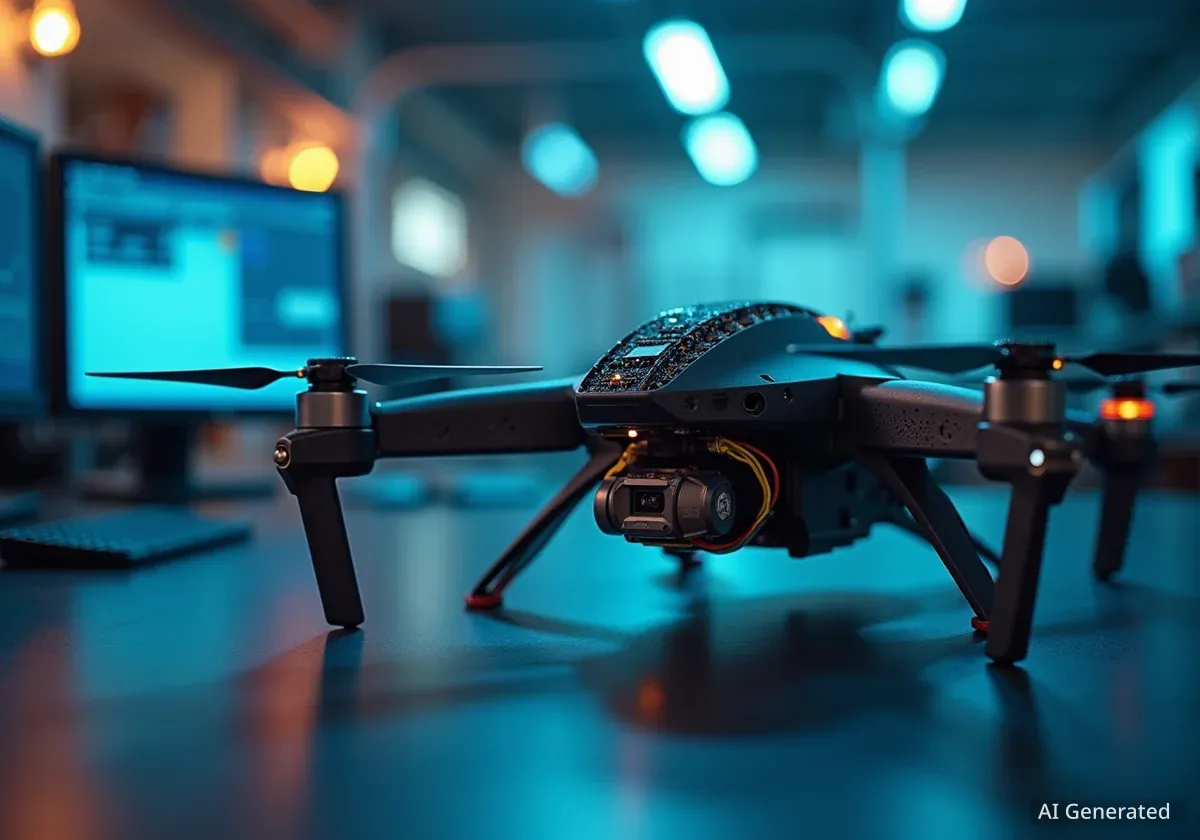Researchers at the Massachusetts Institute of Technology (MIT) have developed a new computational framework to help engineers design complex systems, such as autonomous drones and transportation networks, that can better handle real-world unpredictability. The method allows for the modeling of systems where the performance of individual components is uncertain, providing a more realistic approach to engineering.
This new technique moves beyond traditional best-case and worst-case scenarios by calculating the probability of many different outcomes. This provides designers with more detailed information to create systems that are more robust and reliable when faced with variables like changing weather or component variations.
Key Takeaways
- MIT researchers have introduced a new framework for designing complex systems that accounts for uncertainty in component performance.
- The method uses category theory to model a wide range of potential outcomes and their likelihood, rather than just best- and worst-case scenarios.
- It has been successfully applied to design a delivery drone, optimizing choices for batteries and sensors based on uncertain conditions.
- The framework aims to improve the reliability of autonomous vehicles, aircraft, and large-scale transportation networks.
Addressing Real-World Unpredictability
When engineers design a complex device like a delivery drone, they must make numerous choices about its components. Selecting the right motors, batteries, and sensors involves balancing factors like cost, weight, payload capacity, and operational range. This process is already challenging, but it becomes significantly more difficult when the exact performance of each part is not guaranteed.
Component specifications on paper often don't match their performance in the real world. Furthermore, external factors such as weather can drastically affect how a system operates. The new framework developed at MIT directly confronts this issue by incorporating uncertainty into the design process from the start.
"In practice, the components in a device never behave exactly like you think they will," said Gioele Zardini, an assistant professor at MIT and senior author of the research paper. "If someone has a sensor whose performance is uncertain, and an algorithm that is uncertain, and the design of a robot that is also uncertain, now they have a way to mix all these uncertainties together so they can come up with a better design."
Who is Behind the Research?
The project was led by a team from MIT and the University of Zurich. The authors of the paper include:
- Gioele Zardini, the Rudge and Nancy Allen Assistant Professor of Civil and Environmental Engineering at MIT and the senior author.
- Yujun Huang, an MIT graduate student and the lead author.
- Marius Furter, a graduate student at the University of Zurich.
Their findings are set to be presented at the IEEE Conference on Decision and Control.
A Mathematical Foundation for Better Design
The research builds upon a method known as co-design, which breaks down a large engineering problem into smaller, interconnected parts. This allows designers to analyze how changes in one component affect the entire system. The team integrated principles from category theory, a branch of mathematics, to manage the complexities of uncertainty.
Simplifying a Complex Problem
By using specific mathematical techniques, the researchers were able to create a more generalized structure for co-design problems. This allows them to model how different design choices influence each other, even when the performance of individual parts is unpredictable.
A key advantage of this framework is its accessibility. Unlike many existing tools that demand deep expertise in a specific field, this system is designed to be more intuitive. It functions as a "plug-and-play" model, where different components can be rearranged and tested without breaking the underlying mathematical rules.
What is Category Theory?
Category theory is a field of mathematics that studies abstract structures and their relationships. It provides a high-level language for describing how different mathematical concepts are connected, making it a powerful tool for modeling complex, interconnected systems in fields like computer science, physics, and now, engineering design.
This approach facilitates collaboration among multidisciplinary teams. An expert in battery technology can focus on their component, while a software engineer works on an algorithm, and the framework helps them understand how their combined work will perform under a range of conditions.
"Designing an entire UAV isn’t feasible for just one person, but designing a component of a UAV is," explained Yujun Huang. "By providing the framework for how these components work together in a way that considers uncertainty, we’ve made it easier for people to evaluate the performance of the entire UAV system."
Practical Application in Drone Design
To test their framework, the researchers applied it to the practical challenge of designing a drone. The goal was to select the best perception systems and batteries to maximize the drone's payload while minimizing its weight and lifetime operational cost.
The team considered that the accuracy of a perception system could vary with different weather conditions, but the exact fluctuations were unknown. Their framework allowed them to incorporate this uncertainty into the overall performance model of the drone.
Revealing Deeper Insights
The results provided more detailed information than traditional design methods. For instance, the analysis showed that for drones with lower payloads, nickel-metal hydride batteries offered the lowest expected lifetime cost. According to Zardini, this is an insight that would be difficult to obtain without accounting for performance uncertainty.
The framework also provided specific probabilities for different scenarios. In one example, it calculated that if the drone's payload was set to 1,750 grams, there was a 12.8 percent chance that the chosen battery design would be infeasible. This level of detail empowers engineers to make more informed decisions about risk.
"Our system provides the tradeoffs, and then the user can reason about the design," Zardini added.
Future Directions and Industry Impact
The research team plans to continue refining their work. Their next goals include improving the computational speed of their algorithms and expanding the framework to handle more complex scenarios, such as systems designed by multiple competing or collaborating parties, like different rail companies using shared tracks.
The development has received positive feedback from experts outside of the research team. Aaron Ames, a professor at Caltech who was not involved in the study, highlighted its significance.
"As the complexity of systems grow, and involves more disparate components, we need a formal framework in which to design these systems," Ames stated. "This paper presents a way to compose large systems from modular components, understand design trade-offs, and importantly do so with a notion of uncertainty. This creates an opportunity to formalize the design of large-scale systems with learning-enabled components."
This new approach could pave the way for more reliable autonomous vehicles, safer commercial aircraft, and more efficient transportation networks that are built from the ground up to withstand the unpredictability of the real world.





